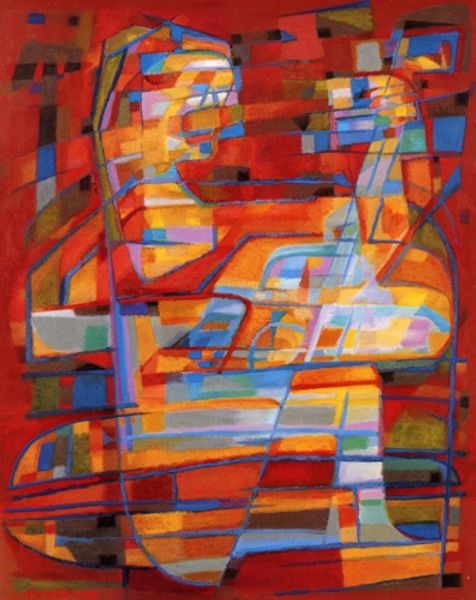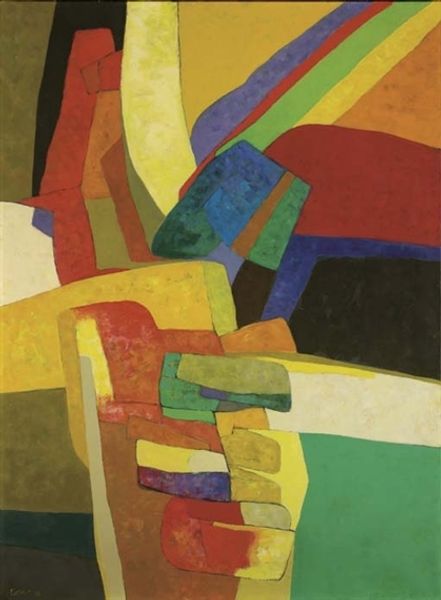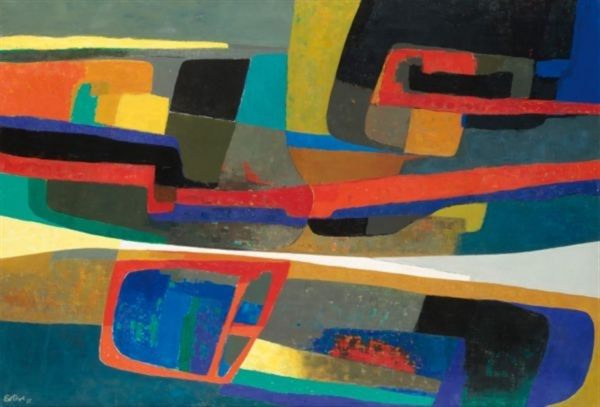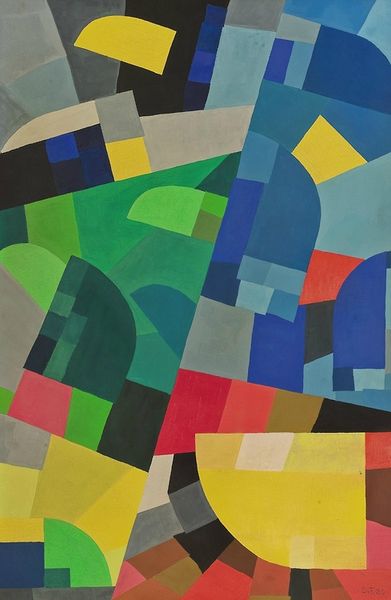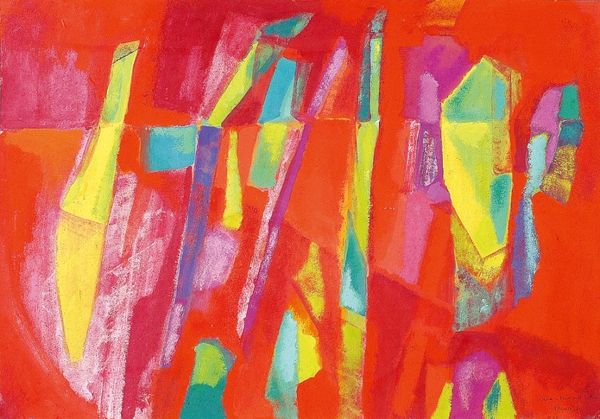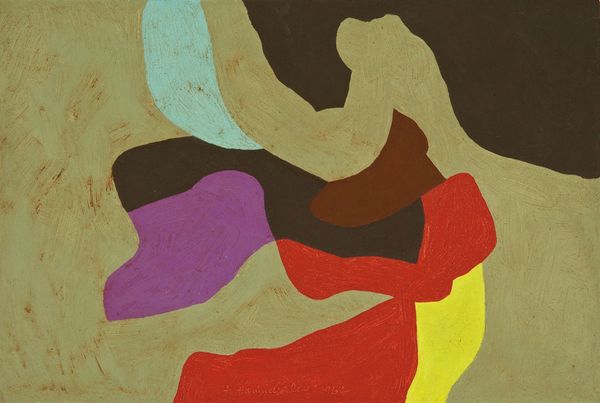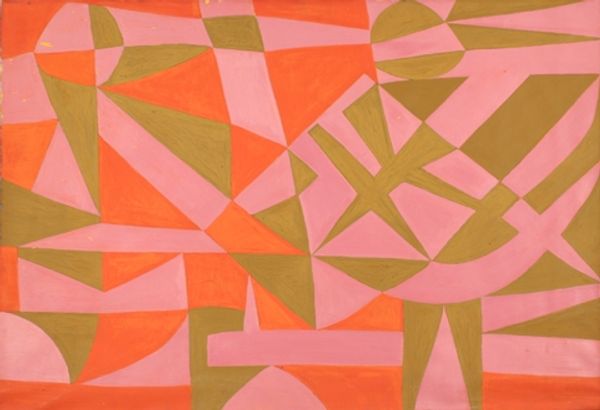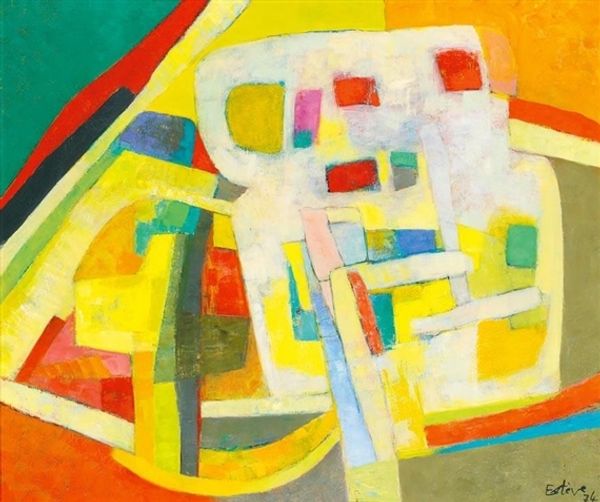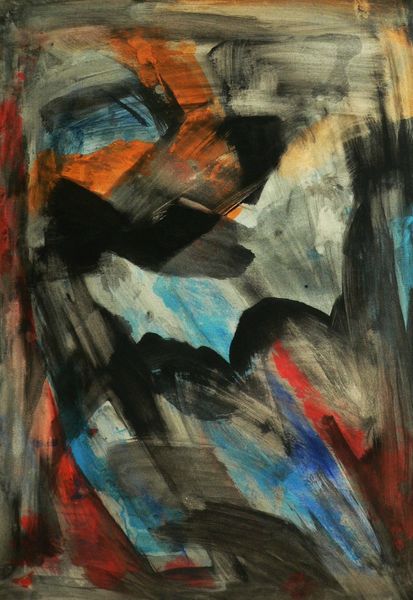
painting, oil-paint
#
abstract-expressionism
#
organic
#
abstract painting
#
painting
#
oil-paint
#
painted
#
oil painting
#
acrylic on canvas
#
abstraction
Copyright: Maurice Esteve,Fair Use
Editor: We’re looking at Maurice Esteve’s "La chute de Lucifer" from 1951, oil on canvas. My first impression is… it’s a lot. The colors are fighting each other, and the composition feels really chaotic. What do you see in this piece? Curator: "A lot," I love that. It’s interesting, isn’t it? Chaotic, yes, but also incredibly visceral. You have to let your eye travel and try not to find immediate answers. Given the title—the Fall of Lucifer—it could be interpreted as representing inner turmoil and rebellion, don’t you think? A celestial ruckus in glorious technicolor, if you will. Editor: That’s interesting. Rebellion definitely comes through, with the clashing colors and lack of clear structure. Curator: Exactly! And remember, this is 1951. We’re post-war, anxieties are high, and Abstract Expressionism is in full swing. Artists were pushing boundaries, questioning everything. It's like Esteve is taking this really dramatic, traditional subject—the fall of Lucifer—and giving it this wonderfully messy, modern spin. Editor: So it’s less about literal depiction and more about conveying a feeling or idea through the abstraction? Curator: Precisely! Think of it as less a portrait of Lucifer’s descent, and more an emotional landscape of his fall. A rebellion of color and form against, perhaps, traditional artistic constraints themselves. It really resonates if you just kind of...let it happen. You following? Editor: Totally. I initially just saw the chaos, but now I see the rebellion and the emotion behind it. Thanks for helping me unlock this artwork. Curator: My pleasure! Isn’t it great how a little context can totally transform our perception?
Comments
No comments
Be the first to comment and join the conversation on the ultimate creative platform.

